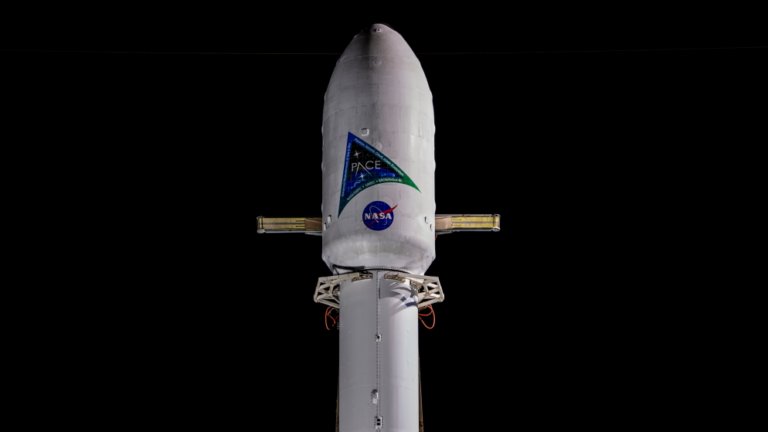Launched today, PACE will soon begin tracking variations in Earth’s surface that can be seen from space.
NASA’s PACE spacecraft, which stands for Plankton, Aerosol, Cloud, and Ocean Ecosystem, has finally been able to take off after a protracted and difficult uphill battle. SpaceX’s Falcon 9 was launched from Cape Canaveral’s Space Launch Complex 40 in Florida at 1:33 a.m. Eastern Standard Time (EST) this morning, Thursday, February 8. The mission was attached to the Falcon 9 and launched simultaneously.
In terms of both funding and the actual launch of the program, PACE got off to a rocky start. The mission, which is anticipated to cost approximately $800 million, was to be canceled in each of the four budgets that were proposed by the Trump administration for fiscal years 2018 through 2021. Since then, it has racked up costs of 864 million dollars. Despite each attempt, Congress was able to escape the cut and preserve the financing for the project. Since that time, all that has been required of us is to get ourselves ready for the mission. Due to bad weather circumstances, the launch of PACE by SpaceX was delayed by two days. The launch was originally scheduled to take place on Tuesday, February 6.
PACE’s principal sensor, the Ocean Color Instrument (OCI), is a sophisticated optical spectrometer that will collect data on the color of the ocean from wavelengths in the infrared, visible, and ultraviolet ranges. Phytoplankton are supposed to have an effect on the hue of the waters of the Earth as a result of their reaction to changes in the environment. This indicates that phytoplankton act as miniature, autotrophic canaries in the marine coal mine, providing scientists with a heads-up anytime changes in the water that would otherwise be imperceptible are now taking place.
The Hyper Angular Research Polarimeter #2 (HARP2) and the Spectro-polarimeter for Planetary Exploration (SPEXone) are two additional instruments that are included on the PACE spacecraft. This first instrument, which is a wide-angle imaging polarimeter, will be used to measure clouds and aerosol particles. With this information, researchers will have a better understanding of the particles that are suspended in the atmosphere of the Earth, how they behave, and whether or not they have the potential to interact with the climate of the Earth, human health, and other factors. In the meantime, a multi-angle polarimeter called SPEXone will be used to measure the way in which sunlight is reflected from the atmosphere, land, and ocean of the Earth. This effort is absolutely necessary in order for PACE to accurately characterize the aerosols in the atmosphere.
One of the most crucial contributors to PACE’s initial success was the fact that it was launched in the early hours of the morning. Additionally, PACE will be in a Sun-synchronous orbit, which means that it will continue to be fixed to the orbital plane of the Sun. Despite the fact that the satellite requires a significant amount of sunlight throughout its observations, if the Sun were to be directly behind it, it might potentially cause glare or ocean reflections that would be disruptive. NASA was able to inject PACE straight into its final orbit by launching it from southern Florida soon after midnight. This allowed them to skip the temporary orbit phase that is intrinsic to many satellite launches.

